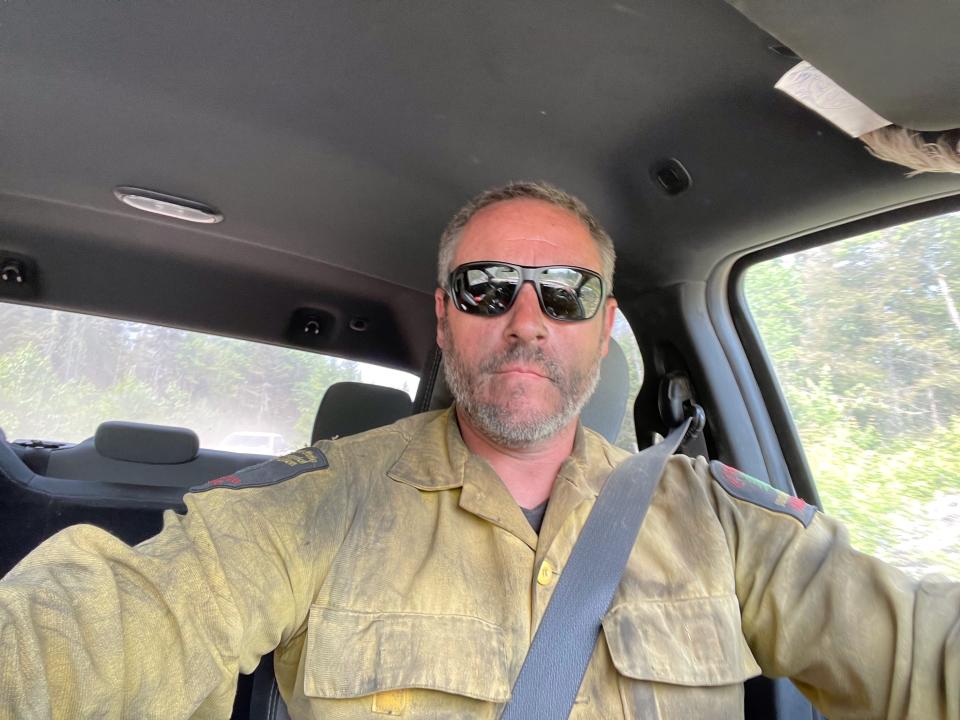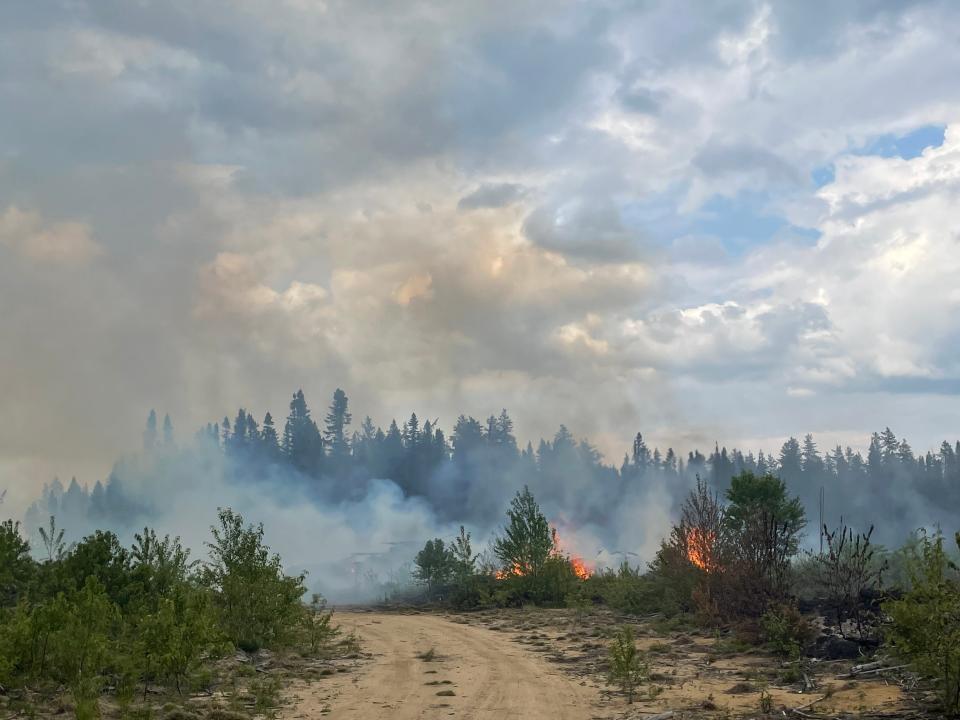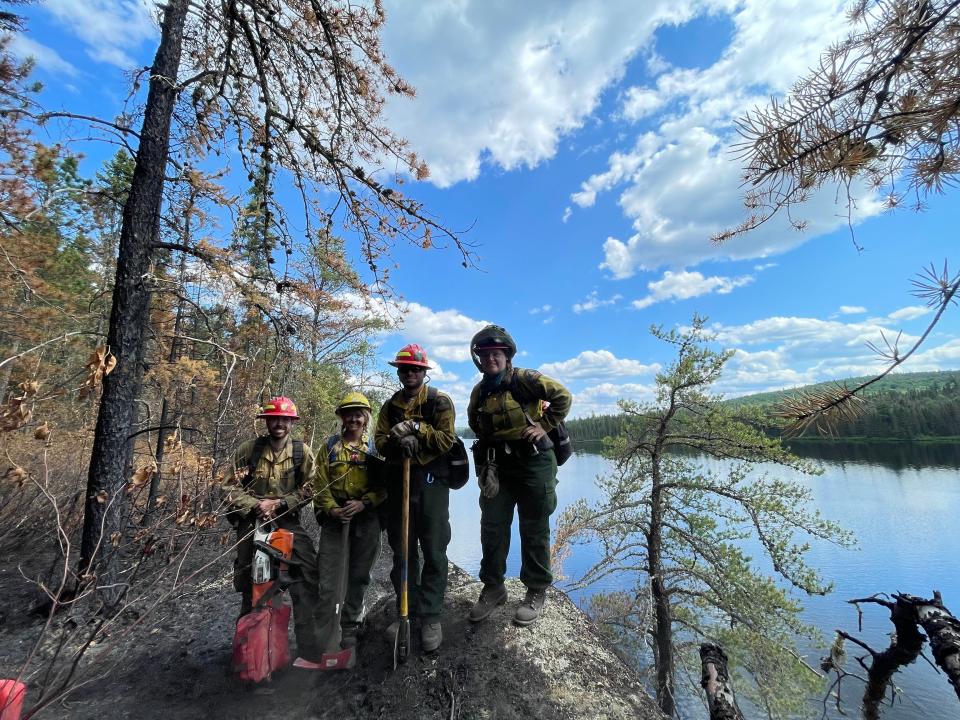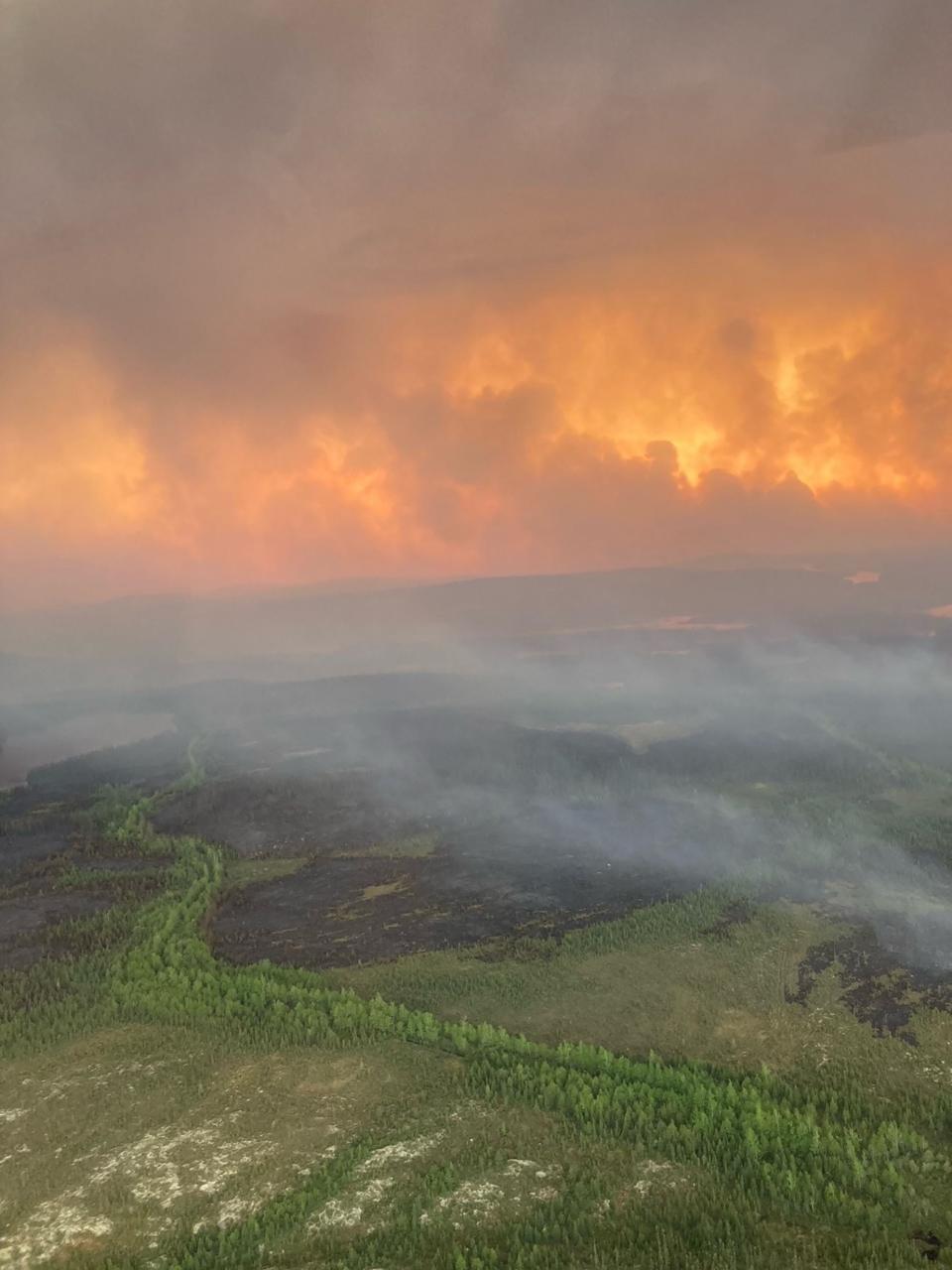NY ranger spent days fighting Canadian wildfires. '(The fires) may burn until the winter'
Québec’s wildfires have scorched an area nearly the size of Adirondack Park, and the historic blazes likely won't abate this summer, a veteran New York forest ranger said.
Rob Praczkajlo, 50, normally based in Ray Brook in the Adirondacks, spent nearly two weeks in Québec’s wilderness fighting Canada’s million-acre fires alongside fellow New York State Department of Environmental Conservation rangers and other American personnel. They helped Canadian firefighters as part of the Northeastern Forest Fire Protection Compact, a consortium of American and Canadian agencies that provide mutual aid to each other.
On June 10, the crew — New York’s second sent to Canada’s fires — went by truck to Maniwaki, Québec, about two hours north of Ottawa.
After briefings with local fire officials, they went north into the bush and forest 57 kilometers “down a very dusty dirt road,” where they arrived at Le Pensive, an outfitters camp, Praczkajlo said. Each morning around 6 a.m., they would drive or fly to fight fires that made up hundreds currently blazing across Québec. Days would last upwards of 13 hours.
They arrived home last Sunday.
Wildfire and smoke map: Track latest wildfires and stay informed on smoke conditions
A 20-year veteran who’s helped fight fires in California and Montana, Praczkajlo said the Canadian fires that have spewed toxic smoke across the East Coast are likely to continue burning because of hot and dry conditions creating more fuel for the fires. Experts have noted climate change is exacerbating these conditions.
In a phone interview, Praczkajlo spoke to USA TODAY Network New York from a vacation in Surf City, North Carolina, where he said he’s been getting the ash and dirt off him while surfing. Next week, he'll return to his forest ranger post in the Adirondack Park's High Peaks region.
The interview has been shortened for clarity.

What motivated you to fight fires in Canada?
"Protecting lives and resources. It's incredible to be able to help out fighting fire.
Three of the four fires that we attacked and fought, nobody had worked on those fires yet. Québec did not have enough resources to put towards those fires. They concentrated their personnel and their aircraft on protecting villages and evacuating people from those villages. They basically had to triage and choose to let some fires burn that there were less values at risk."
New York's air: Will long-term health effects from wildfire smoke linger?

What was the scope of the four Canadian wildfires you fought?
"The total was somewhere around 116,000 acres of fire.
That scale of fire is quite large in comparison to what we usually fight in New York. A large fire here in New York for us would be a thousand-acre fire that we've had on numerous occasions, mostly down in the Shawangunk Ridge, near the New Paltz, Middletown area. So much larger scale.
When we left, they had burned 4.5 million acres just in Québec alone at that point. The Adirondack Park is 6 million acres. So it's almost like burning the entire Adirondack Park."

How does this kind of fire compare to other wildfires you've fought?
"I've never seen fire so persistent. I've seen fire that was surprisingly persistent. It took a day or two of wetting the fuels. But I've never ever seen conditions that dry where you can spray it for three or four days and then have it rekindle. That's insane for it to be that dry."

As a NY forest ranger, any takeaways for your job or your region that you cover?
"Anytime that we go out of state and fight fire, or even in the state on these fires, we gain so much experience fighting those fires you see, based on the relative humidity and the temperature and the wind direction, and what the fire is, is burning.
In this case, in Québec, they call the fuel model. So the fuel is obviously anything that's burnable, the trees and brush and blueberries, and all those things that are there. They call that fuel model C2. And we have that same fuel model in our higher elevations in the High Peaks region where I work. So it's a great experience for me to see how fire behaves when it burns in that type of fuel model.
Québec fights fire very, very similar to how we fight fire in New York using pumps and hose lays to go through the forest, and spray what's on fire. So it's very similar.
We are able in New York to dig fireline a lot more with hand tools where, in Québec, literally, the type of ground cover there is it’s kind of like we say, trying to dig through a sponge. It's just spongy, boggy-type ground with a lot of moss and low shrubbery. So it's almost impossible to dig any type of hand line where we were in the north."

Can we expect things like that happening in NY?
"Not at this point. We've had enough rain at this point where our fire danger is low to moderate. Québec is at an extreme fire danger level.
But prior to June, the end of May, we were in drought-type conditions kind of pushing that to the point of high fire danger. Fortunately, in New York, we've put a ban on open burning between March 15 and May 15. And that's made a huge difference in those fires that are human caused.
I was actually looking at some of the statistics on the SOPFEU (the Québec forest fire prevention agency) website for Québec, and usually, their numbers are around 70%. They say on their website, human caused, but the majority of the 112 fires they had burning at the time were naturally caused by lightning because they had a major lightning storm that came through on June 1 and just ignited fires all over the province."

What do you expect for the rest of the summer? Do you expect these fires to continue?
"Québec needs a good two or three weeks of solid rain. And then rain after that as well to completely put these fires to rest. A lot of rain, we're talking. (The fires) may burn until the winter. They're fully prepared to fight until the winter."
Eduardo Cuevas covers race and justice for the USA TODAY Network of New York. He can be reached at EMCuevas1@gannett.com and followed on Twitter @eduardomcuevas.
This article originally appeared on New York State Team: NY forest ranger fought Canada wildfires. Here's what he saw

